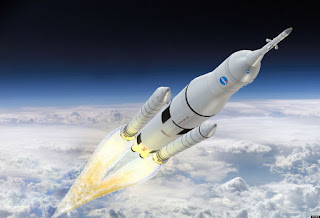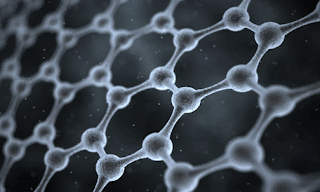Week 9: Space and Art
Week 9: Space and Art
This week's lecture and discussion was all about space history and how all the topics throughout the quarter are summed up into space and art. I was interested in Professor Vesna's talk about the history of space, the atomic bomb, the race to the moon. While an interesting history lesson, the class still revolves around how art and another subject are connected.
Floris Bannister, in his essay, "Revolutions in Time, Space, and Art," says that because of art, we have the ability to imagine a life in space. Copernicus and his ideas have had a profound impact on the scientific community and our world in general. He showed how the galaxy was heliocentric and our Earth revolved around the sun. Although his findings have proven to be truly revolutionary, he was too afraid to share his findings out of fear of being mocked and ridiculed from the public and the church.
 Roger Malina had a statement saying "one of the defining achievements of the twentieth century was the birth of the space age. For the first time in history, humans escaped the gravity of the earth, walked on other celestial planets and establish the first outposts in space"(The Leonardo Space Art Project). It's amazing how much has been accomplished in space in the last decade. At this rate, and the rate technology is progressing, it'll be extremely interesting to see what we can accomplish in the next decade. I remember watching a movie called "Elysium" and there was a space station of sorts that people lived on in space. With all the natural gas problems and global warming, this type of life in space may become a reality at some point.
Roger Malina had a statement saying "one of the defining achievements of the twentieth century was the birth of the space age. For the first time in history, humans escaped the gravity of the earth, walked on other celestial planets and establish the first outposts in space"(The Leonardo Space Art Project). It's amazing how much has been accomplished in space in the last decade. At this rate, and the rate technology is progressing, it'll be extremely interesting to see what we can accomplish in the next decade. I remember watching a movie called "Elysium" and there was a space station of sorts that people lived on in space. With all the natural gas problems and global warming, this type of life in space may become a reality at some point.
This week's lecture and discussion was all about space history and how all the topics throughout the quarter are summed up into space and art. I was interested in Professor Vesna's talk about the history of space, the atomic bomb, the race to the moon. While an interesting history lesson, the class still revolves around how art and another subject are connected.
 Roger Malina had a statement saying "one of the defining achievements of the twentieth century was the birth of the space age. For the first time in history, humans escaped the gravity of the earth, walked on other celestial planets and establish the first outposts in space"(The Leonardo Space Art Project). It's amazing how much has been accomplished in space in the last decade. At this rate, and the rate technology is progressing, it'll be extremely interesting to see what we can accomplish in the next decade. I remember watching a movie called "Elysium" and there was a space station of sorts that people lived on in space. With all the natural gas problems and global warming, this type of life in space may become a reality at some point.
Roger Malina had a statement saying "one of the defining achievements of the twentieth century was the birth of the space age. For the first time in history, humans escaped the gravity of the earth, walked on other celestial planets and establish the first outposts in space"(The Leonardo Space Art Project). It's amazing how much has been accomplished in space in the last decade. At this rate, and the rate technology is progressing, it'll be extremely interesting to see what we can accomplish in the next decade. I remember watching a movie called "Elysium" and there was a space station of sorts that people lived on in space. With all the natural gas problems and global warming, this type of life in space may become a reality at some point.
"Powers of Tenâ„¢ (1977)." YouTube. YouTube, 26 Aug. 2010. Web. 28 May. 2016. <https://www.youtube.com/watch?v=0fKBhvDjuy0>.
"8 Space Pt1 1280x720." YouTube. YouTube, 29 July 2013. Web. 28 May. 2016. <https://www.youtube.com/watch?v=6ZIqTR332l8>.
Forde, Kathleene. "Dancing on the Cieling: Art and Zero Gravity." zerogravity.empac.rpi.edu. N.p.. Web. 28 MY 2016. <http://zerogravity.empac.rpi.edu/>.
Carillo, Joe. "Copernicus’ heliocentric theory as the mother of all paradigm shifts."josecarilloforum.com. N.p., 16 Oct 2009. Web. 28 Dec 2016. <http://josecarilloforum.com/forum/index.php?topic=330.0>.
"Leonardo Space Art Project Visioneers." Leonardo Space Art Project Visioneers. N.p., n.d. Web. 28 May 2016.




Hi Sean, great post! I also agree with what Roger Malina has mentioned about the space. I think it's necessary for scientists to continue explore and study the space in order to substitute the lack of sources in earth. That being said, I think artists who are exploring in this field is doing something as significant as scientists are doing. I'm interested to hear more about the Leonardo Space Art Project and how they organized the project and who participated and etc.
ReplyDelete